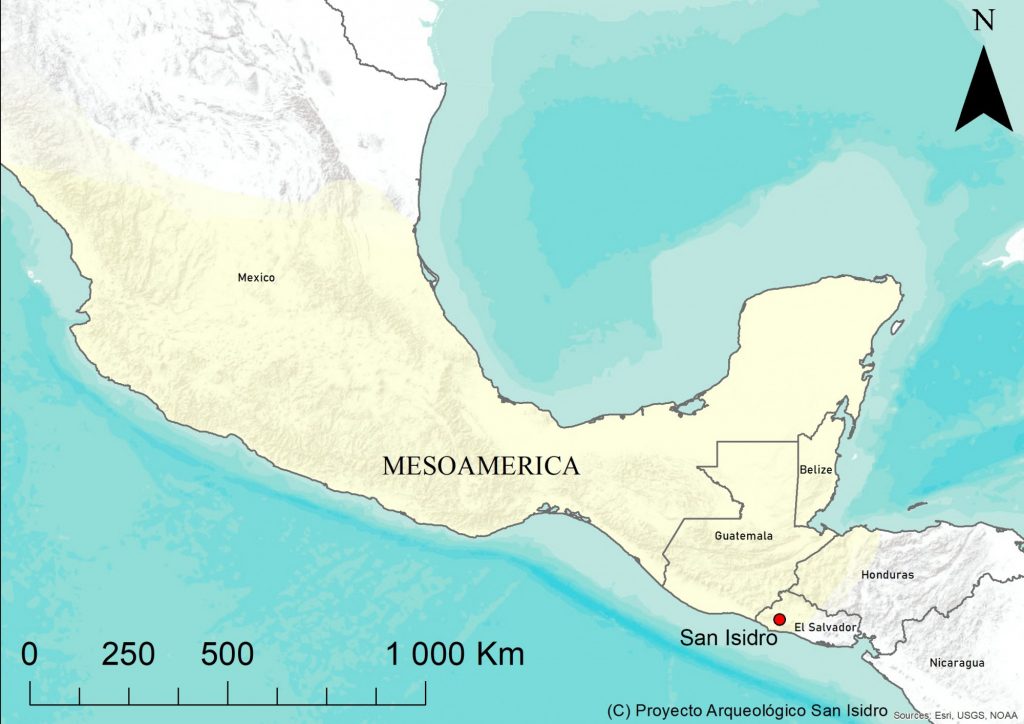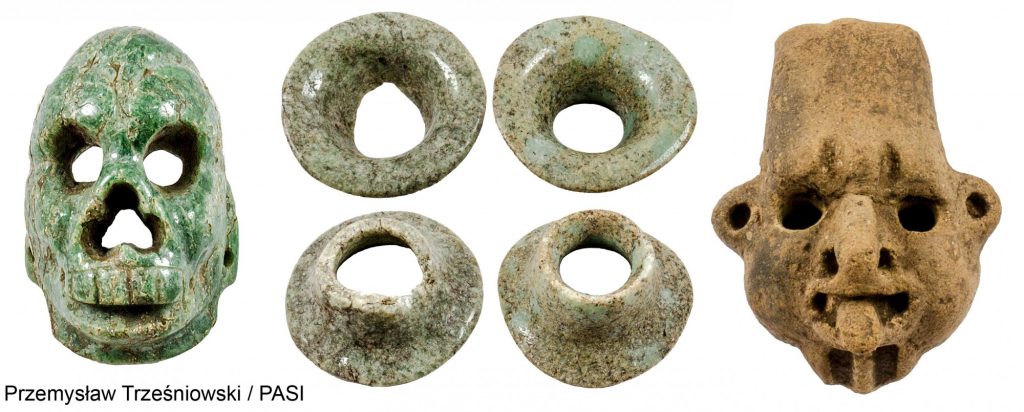Archaeologists from the University of Warsaw have commenced archaeological excavations at a pre-Hispanic site in El Salvador. Apart from a few mentions in the literature and sporadic, mostly informal, visits by local and foreign archaeologists, the site of San Isidro remained hitherto uninvestigated.

© J. Szymański / PASI, zdjęcie na licencji CC BY 4.0
The San Isidro Archaeological Project (Proyecto Arqueológico San Isidro, PASI) under the direction of Dr. Jan Szymański aims to carry out reconnaissance of that Mesoamerican site through the application of methods of digital archaeology. After two preliminary expeditions in 2018 and 2019, February 2021 marked the beginning of the first archaeological excavations.

© PASI, published under CC BY 4.0
Scientists from the University of Warsaw and Salvadoran Universidad Francisco Gavidia, in cooperation with archaeologists from the Ministry of Culture of El Salvador, carried out a wide-reaching, drone-based survey. At the same time specialists from the Faculties of Archaeology and Geology at the University of Warsaw conducted a remote-sensing survey of the central portion of the site through the application of geophysical methods (electro-resistivity, magnetometry, georadar). In April and May, archaeological excavations were carried out on the largest preserved structure of the site, known as El Cerrito (Spanish: The Hill).

© P.Trześniowski / PASI, published under CC BY 4.0

© J.Szymański / PASI, published under CC BY 4.0
Amidst Coffee and Cane
Thanks to the efforts of the Polish-Salvadoran team, it is now known that pre-Hispanic San Isidro extended over an area of at least 5 square kilometers, which places it among the largest known sites
of the entire Southeastern Mesoamerica. The remains of more than 40 monumental earthen platforms are still visible, dispersed over what
is now a coffee and sugarcane plantation that lies at the foot
of the massif of the Santa Ana volcanoes.

© R.Cea / PASI, published under CC BY 4.0
The largest of these platforms, including El Cerrito, rise to a height
of over 10 meters and often have a diameter of more than 50 meters. The smallest are perceptible only on digital terrain models obtained from aerial surveys and geophysical analyzes.

© J.Szymański / PASI
Pottery analyzes point to an unusually early date for San Isidro, within the Middle and Late Preclassic periods (ca. 1000 – 400 BC,
and 400 BC – AD 250, respectively). El Cerrito itself appears to have been built at the very beginning of the Middle Preclassic, thus making it one of the earliest monumental constructions in Mesoamerica, perhaps contemporaneous with, if not slightly earlier than, the famous Olmec pyramidal platform at La Venta, dated to ca. 8th century BC.

© P.Trześniowski / PASI, published under CC BY 4.0
Mysterious Identity
Although information regarding the identity of the builders
and inhabitants of ancient San Isidro is missing, the manner
of architectural construction, in conjunction with the forms
and production techniques of ceramic artifacts, indicate strong ties
with the cultures of southeastern Mesoamerica (mainly the Maya), although this does not exclude possible contacts with the neighboring cultural sphere, known as the Isthmo-Columbian Area,
or Lower Central America, which extends from eastern Honduras
and Nicaragua, through Costa Rica and Panama, and into the northwestern portion of Colombia in South America.
One of the working theories of the PASI is that San Isidro played
a key role in a network of cultural exchange that once connected these two great regional spheres.

© J. Martecki / PASI, published under CC BY 4.0
Archaeological fieldwork is planned to continue at the beginning
of 2022, with the main aim being to establish the chronology
of particular parts of the site.
Results of the 2018 and 2019 research campaigns were published
in Mexicon and Estudios Latinoamericanos.
This article may be freely reprinted, with reference to the source.
Author: Jan Szymański
About the author:
Dr. Jan Szymański from the Faculty of Archaeology, University of Warsaw, specializes in the analysis and interpretation of material remains of pre-Hispanic Mesoamerican and Lower Central American cultures. In particular, he focuses on the physical manifestations of cultural identity of past societies. Since 2018 he has been conducting archaeological research in El Salvador.
Editor: J.M.C
Proofreading: Stephanie Aulsebrook

2 Replies to “Poles on the fringes of Mesoamerica”